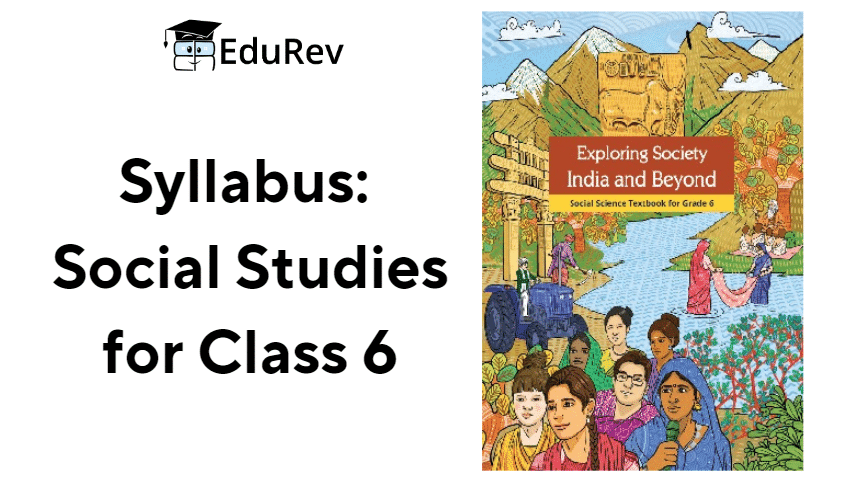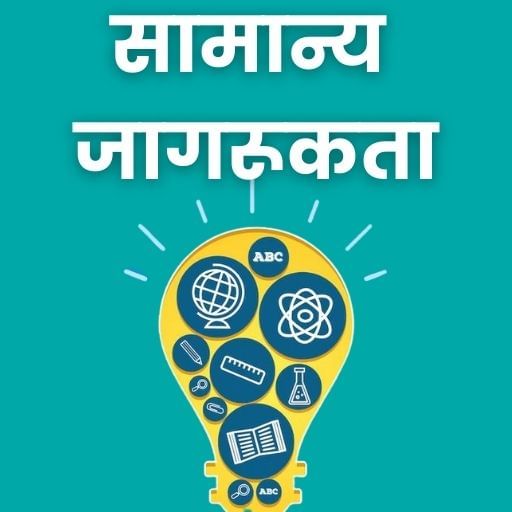Syllabus: Social Studies (New NCERT) for Class 6 | Social Studies for Class 6 PDF Download
In Class 6 Social Studies, you'll learn about history, geography, and civics. Topics include ancient civilizations, maps, the Indian government, and our environment. Knowing the syllabus helps you understand what you'll study and how each chapter connects. Let’s explore these interesting topics and see how they fit together! 
Theme A — India and the World: Land and the People
This theme covers the basics of our planet's geography, like its major features and how to show them on maps. While we have great maps on our phones today, this theme goes beyond maps. It explores how features like oceans, mountains, and rivers have influenced civilizations and helped shape India’s unique identity.
Chapter 1: Locating Places on the Earth
In this chapter, you'll learn about:
- Types of Maps: Learn about different kinds of maps, including Physical Maps (showing natural features), Political Maps (depicting boundaries), and Thematic Maps (focusing on specific information).
- Map Components: Understand essential map elements such as Distance (scale), Direction (cardinal directions), and Symbols (legend).
- Coordinates: Explore the concepts of Latitude (parallel lines) and Longitude (vertical lines) for precise location identification.
- Time Zones: Discover the 24 time zones, each 15° wide, and learn about the date change at the International Date Line.
Chapter 2: Oceans and Continents
In this chapter, you'll study:
- Earth’s Surface: Understand how Earth's surface is divided between oceans and continents.
- Indian Navy's Motto: Learn about the significance of "Sam noh Varunah" in maritime geography.
- Distribution: Explore why the Northern Hemisphere has more land and the Southern Hemisphere has more water.
- Oceans: Study the five major oceans and understand why seawater is salty.
- Disasters: Learn about the impact of ocean-related disasters like tsunamis and cyclones.
- Islands: Discover the role of islands, including the largest one, Greenland.
- Environmental Impact: Understand how oceans influence the environment and the challenges they face from pollution.
In this chapter, you'll study:
- Landforms: Explore different types of landforms, including mountains, plateaus, and plains.
- Mountains: Learn about the characteristics of mountains, their types (e.g., young vs. old), notable examples, and the unique environments they create.
- Plateaus: Understand the features of plateaus, their types (e.g., lava plateaus), notable examples, and their mineral richness.
- Plains: Discover the characteristics and types of plains (e.g., floodplains) and their importance for agriculture and human settlement.
- Historical and Cultural Aspects: Explore the role of landforms in ancient poetry and their sacred status in various cultures.
- Adaptation and Challenges: Learn how people adapt to different landforms and the environmental challenges they face.
Theme B — Tapestry of the Past
In this theme, we look at India’s history as if we're creating a big, detailed picture. Understanding the past helps us make sense of the present and shapes our identity. By studying past events, we learn where things went right or wrong, helping us avoid making the same mistakes again.
Chapter 4: Timeline and Sources of History
In this chapter, you'll study:
- The Earth's History: Understand how our planet's long history affects today.
- Who Studies Earth History: Learn about geologists, palaeontologists, anthropologists, and archaeologists.
- Measuring Time: Explore the Gregorian calendar and other systems like BCE and CE.
- Timelines: Discover how timelines help us organise historical events.
- Centuries and Millenniums: Understand terms for longer periods like centuries (100 years) and millenniums (1,000 years).
- Traditional Indian Calendars: Learn about panchangas, the traditional Indian calendars used for timekeeping and predicting celestial events.
- Sources of History: Understand the various sources historians use, such as artefacts and ancient writings.
- Early Human History: Explore how early humans lived, used tools, and began farming.
- The First Crops: See how the end of the Ice Age led to agriculture and early settlements.
Chapter 5: India, That Is Bharat
In this chapter, you'll study:
- India's Historical Names: Investigate names like 'Sapta Sindhava,' 'Bhäratavarsha,' and 'Jambudvipa' from ancient texts.
- Evolution of 'Bharat': Learn how 'Bhärata' became the common name for India.
- Foreign Names: Discover names like 'Hind,' 'Indoi,' and 'Yintu' used by Persians, Greeks, and Chinese.
- Hindustan: Understand the term 'Hindustan' and its historical significance.
- Xuanzang's Journey: See how the Chinese scholar Xuanzang's travels shaped our understanding of ancient India.
Chapter 6: The Beginnings of Indian Civilisation
In this chapter, you'll study:
- Harappan Civilization: Its advanced cities and balanced society.
- Civilization Traits: Key features such as government, trade, and writing.
- Development: Growth from villages to cities.
- City Planning: Architecture and water management techniques.
- Diet and Trade: Food sources, agriculture, and trading practices.
- Decline: Reasons for the fall of the civilization and its legacy.
Theme C — Our Cultural Heritage and Knowledge Traditions
India has a long and rich history. This part looks at what makes Indian culture unique, its core ideas, and how it has shaped Indian history. It also explores how this cultural background can help us solve today’s problems. The goal is to help students understand why our cultural roots are important for our society.
Chapter 7: India's Cultural Roots
In this chapter, you'll study:
- Unity in Diversity: India’s strength comes from bringing together various cultures into one nation.
- Diverse Landscapes: India’s wide-ranging diversity is shown through its languages, foods, and traditions.
- Staple Foods: Common grains such as rice, barley, and wheat are prevalent across the country.
- Traditional Clothing: Different regions are famous for their unique styles of saris and textiles.
- Festivals: India holds many festivals, often with local names but similar themes.
- Literature: Indian epics like the Ramayana and Mahabharata illustrate unity in diverse storytelling.
Chapter 8: Unity in Diversity, or 'Many in the One'
In this chapter, you'll study:
- Unity in Diversity: How India’s different cultures and traditions come together to form a single nation.
- Geographical and Cultural Diversity: Varied landscapes, foods, and clothing found across regions.
- Staple Foods and Spices: Common food grains and spices used throughout India.
- Textiles and Clothing: The variety and importance of traditional clothing like saris.
- Festivals: Various festivals celebrated in different regions.
- Literature and Epics: Important literary works and epics such as the Ramayana and Mahabharata.
 |
Download the notes
Syllabus: Social Studies (New NCERT) for Class 6
|
Download as PDF |
Theme D — Governance and Democracy
Governance and Democracy are crucial for understanding how societies are organized and how decisions are made. This theme focuses on the functioning of political systems, especially in India, which is the world’s largest democracy. It explores the different levels of government, the role of citizens, and the various political systems across the globe. By studying this theme, we learn about our rights and responsibilities as citizens and how we can actively participate in shaping the policies that affect our lives.
Chapter 9: Family and Community
In this chapter, you'll study:
- Importance of Families and Communities. They provide support and a sense of belonging.
- Types of Families. Joint families, nuclear families, and their characteristics.
- Family Roles. Responsibilities of parents, children, and grandparents.
- Community Functions. Support systems, cultural practices, and managing resources.
- Real-Life Examples. Community initiatives and their effects.
Chapter 10: Grassroots Democracy — Part 1: Governance
In this chapter, you'll study:
- Government and Levels: Local, State, Central.
- Democracy: Citizens elect representatives.
- Dr. A.P.J. Abdul Kalam: Key figure in India's space and missile programs.
Chapter 11: Grassroots Democracy — Part 2: Local Government in Rural Areas
In this chapter, you'll study:
- Panchayati Raj System and Functions. Local governance in India works at three levels: Gram Panchayat (village), Panchayat Samiti (block), and Zila Parishad (district).
- Key Figures. Notable Sarpanchs who make significant contributions.
- Child-Friendly Initiatives. Involving children in village decision-making.
- Importance. Empowers communities, enhances efficiency, and promotes participation.
Chapter 12: Grassroots Democracy — Part 3: Local Government in Urban Areas
In this chapter, you'll study:
- Urban Governance. Managing cities through local bodies.
- Types of Bodies. Municipal Corporations, Councils, and Panchayats.
- Functions. Infrastructure, waste management, and development.
- Citizen Role. Active participation and adhering to community rules.
Theme E — Economic Life Around Us
This theme explores how people and nations fulfill their basic needs for food, clothing, and shelter. It also looks into the functioning of economies, particularly in a vast country like India. Key topics include the definition of money, its creation, how people earn it, and the management of resources. Understanding these concepts helps us grasp the fundamentals of economic activities.
In this chapter, you'll study:
- Economic Activities. These are actions that involve money, such as farming, manufacturing, and providing various services.
- Non-Economic Activities. These activities do not involve money and include volunteering, taking care of family members, and other forms of unpaid work.
- Value Addition in Economic Activities. This refers to the process of increasing the value of a product through different stages of production, such as processing, packaging, and marketing.
After discussing the value of work, we now turn our attention to the broader context of economic activities.
Chapter 14: Economic Activities Around Us
In this chapter, you'll learn about:
- Economic Sectors. Different sectors of the economy, such as agriculture, industry, and services, each play a vital role in the overall economic framework.
- Interdependence. This refers to how different sectors rely on each other to function effectively. For example, dairy processing depends on dairy farming for raw materials.
|
44 videos|176 docs|28 tests
|
FAQs on Syllabus: Social Studies (New NCERT) for Class 6 - Social Studies for Class 6
| 1. What are the key chapters covered in the Class 6 Social Studies syllabus according to NCERT? |  |
| 2. How is the evaluation done in Class 6 Social Studies? |  |
| 3. What are some important skills students develop through the Class 6 Social Studies syllabus? |  |
| 4. How can students effectively prepare for their Social Studies exams in Class 6? |  |
| 5. Why is it important for students to study Social Studies in Class 6? |  |


































